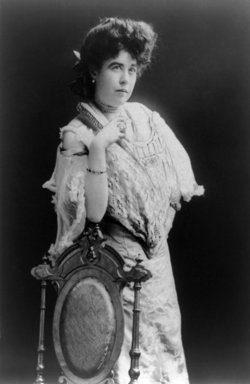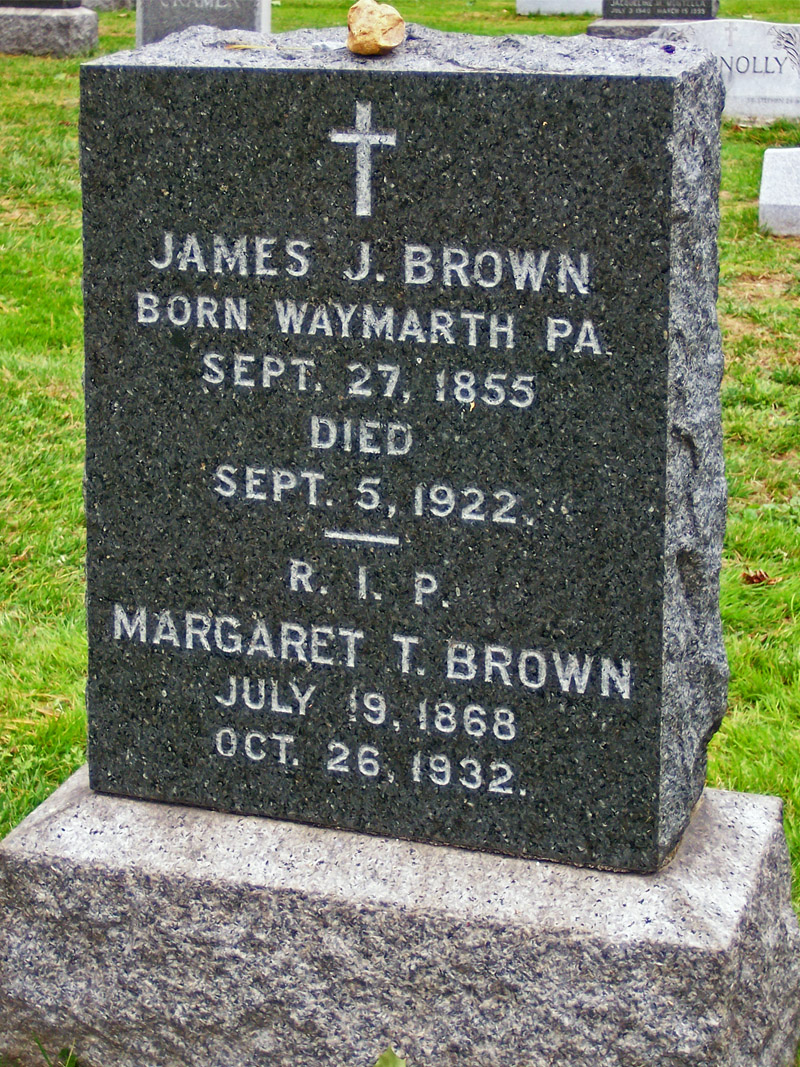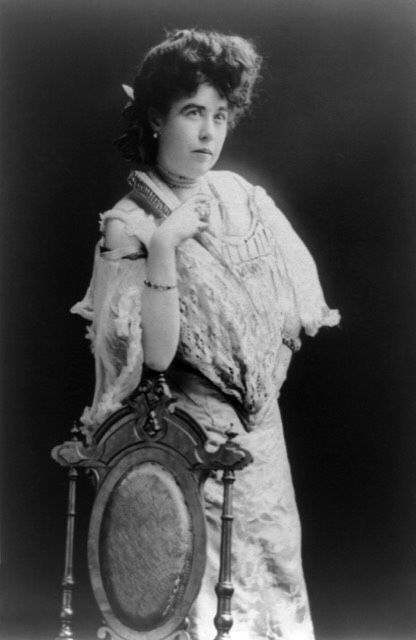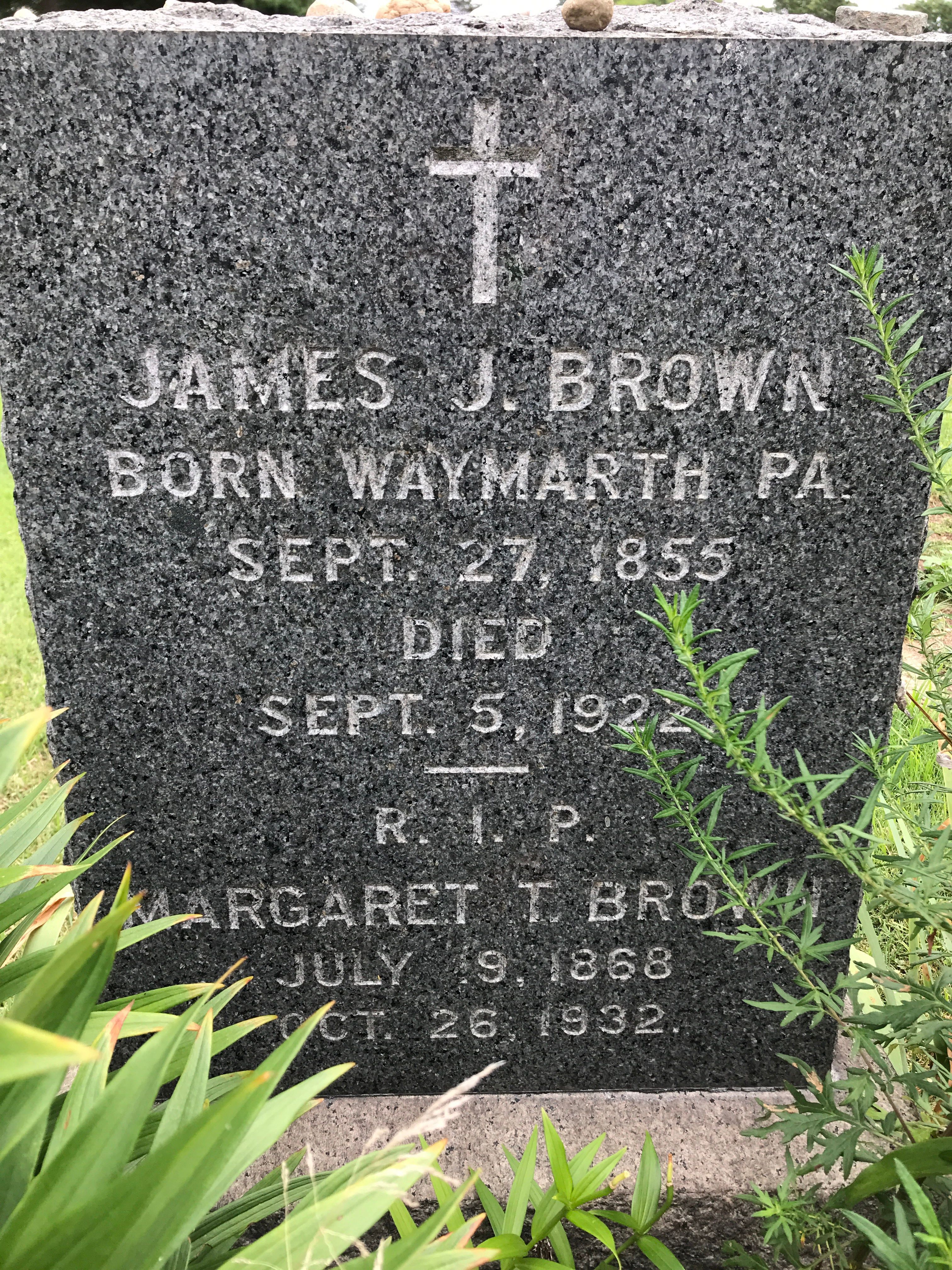Margaret "Maggie" Tobin was born July 18, 1867, in Hannibal, Missouri, to John and Johanna Tobin. At the age of 19, she went to live in Leadville, Colorado, with her brother. In the summer of 1886, she met James Joseph "J.J." Brown, and they were married on September 1, 1886.
While her husband advanced to Superintendent in the mines, Maggie started soup kitchens in the mining community and became active in women's rights. Her husband found a way to mine gold which made them wealthy, and, in 1894, Maggie and J.J. moved to Denver. By 1903, Margaret was treading ground where few women were allowed, and, in 1898, she became an associate member of the Denver Woman's Press Club (DWPC). Although she had not yet published any works, Margaret would soon publish many travel essays, an account of her Titanic experience, and an autobiography.
By 1903, Margaret began tackling the tough social issues of her time: juvenile justice; children's, women's and miner's rights; and social equality. When Judge Ben Lindsey met Margaret in 1903, he saw a partner that shared his vision of a juvenile court system and had the ability to raise funds and make connections. Together, they created a juvenile justice system that reformed the way the state and the nation treated juvenile crimes.
Margaret also became very involved in politics, as Colorado was one of the first states to give women the right to vote in the 1880s. She became a suffragette and attended national rallies on women's rights. Margaret first ran for the United States Senate in 1909 and then again in 1911, both before women had the right to vote nationally.
In 1909, after 23 years of marriage, the Browns quietly signed a separation agreement and went their separate ways. They never reconciled, but remained connected and cared for each other throughout their lives.
In April 1912, she booked passage on the maiden voyage of the RMS Titanic. Shortly before midnight on April 14, the Titanic struck an iceberg and sunk. She allegedly took control of Lifeboat No. 6. After being rescued by the ship Carpathia, she began to take action consoling survivors who spoke little English and rifling through the ship to find extra blankets and supplies to distribute to the survivors. She also compiled lists of survivors and arranged for information to be radioed to their families at her expense. Margaret rallied the first-class passengers to donate money to help less fortunate passengers and, before the Carpathia reached New York, $10,000 had been raised. When interviewed by reporters upon their return and asked to what she attributed her survival, she replied "Typical Brown luck. We're unsinkable."
The Titanic disaster made Margaret a national hero, and her heroism in assisting other survivors and getting people to safety was recognized after her return. She founded and was head of the Titanic Survivors' Committee, which supported immigrants who had lost everything in the disaster and helped get a memorial erected to the Titanic survivors in Washington, D.C.
In 1914, her bid for the United States Senate was undertaken by the Congressional Union and endorsed by the President of the National Women's Suffrage Association of New York, but she postponed her bid because of World War I. She was awarded the prestigious Palm of the Academy of France in May 1929 and the French Legion of Honor in April 1932, primarily for her work during World War I.
She never did go by the name Molly; that was added decades after her death when her life was dramatized by the Broadway stage play and movie called "The Unsinkable Molly Brown." She died in her sleep at the Barbizon Hotel on October 26, 1932, at the age of 65. The autopsy revealed a large tumor on her brain, and the hospital listed her official cause of death as a cerebral hemorrhage with contributory arteriosclerosis.
Margaret "Maggie" Tobin was born July 18, 1867, in Hannibal, Missouri, to John and Johanna Tobin. At the age of 19, she went to live in Leadville, Colorado, with her brother. In the summer of 1886, she met James Joseph "J.J." Brown, and they were married on September 1, 1886.
While her husband advanced to Superintendent in the mines, Maggie started soup kitchens in the mining community and became active in women's rights. Her husband found a way to mine gold which made them wealthy, and, in 1894, Maggie and J.J. moved to Denver. By 1903, Margaret was treading ground where few women were allowed, and, in 1898, she became an associate member of the Denver Woman's Press Club (DWPC). Although she had not yet published any works, Margaret would soon publish many travel essays, an account of her Titanic experience, and an autobiography.
By 1903, Margaret began tackling the tough social issues of her time: juvenile justice; children's, women's and miner's rights; and social equality. When Judge Ben Lindsey met Margaret in 1903, he saw a partner that shared his vision of a juvenile court system and had the ability to raise funds and make connections. Together, they created a juvenile justice system that reformed the way the state and the nation treated juvenile crimes.
Margaret also became very involved in politics, as Colorado was one of the first states to give women the right to vote in the 1880s. She became a suffragette and attended national rallies on women's rights. Margaret first ran for the United States Senate in 1909 and then again in 1911, both before women had the right to vote nationally.
In 1909, after 23 years of marriage, the Browns quietly signed a separation agreement and went their separate ways. They never reconciled, but remained connected and cared for each other throughout their lives.
In April 1912, she booked passage on the maiden voyage of the RMS Titanic. Shortly before midnight on April 14, the Titanic struck an iceberg and sunk. She allegedly took control of Lifeboat No. 6. After being rescued by the ship Carpathia, she began to take action consoling survivors who spoke little English and rifling through the ship to find extra blankets and supplies to distribute to the survivors. She also compiled lists of survivors and arranged for information to be radioed to their families at her expense. Margaret rallied the first-class passengers to donate money to help less fortunate passengers and, before the Carpathia reached New York, $10,000 had been raised. When interviewed by reporters upon their return and asked to what she attributed her survival, she replied "Typical Brown luck. We're unsinkable."
The Titanic disaster made Margaret a national hero, and her heroism in assisting other survivors and getting people to safety was recognized after her return. She founded and was head of the Titanic Survivors' Committee, which supported immigrants who had lost everything in the disaster and helped get a memorial erected to the Titanic survivors in Washington, D.C.
In 1914, her bid for the United States Senate was undertaken by the Congressional Union and endorsed by the President of the National Women's Suffrage Association of New York, but she postponed her bid because of World War I. She was awarded the prestigious Palm of the Academy of France in May 1929 and the French Legion of Honor in April 1932, primarily for her work during World War I.
She never did go by the name Molly; that was added decades after her death when her life was dramatized by the Broadway stage play and movie called "The Unsinkable Molly Brown." She died in her sleep at the Barbizon Hotel on October 26, 1932, at the age of 65. The autopsy revealed a large tumor on her brain, and the hospital listed her official cause of death as a cerebral hemorrhage with contributory arteriosclerosis.
Bio by: Debbie
Inscription
JAMES J. BROWN
BORN WAYMARTH PA
SEPT. 27, 1855
DIED
SEPT. 5, 1922
R. I. P.
MARGARET T. BROWN
JULY 19, 1868
OCT, 26, 1932
Family Members
Advertisement
See more Brown memorials in:
Advertisement














